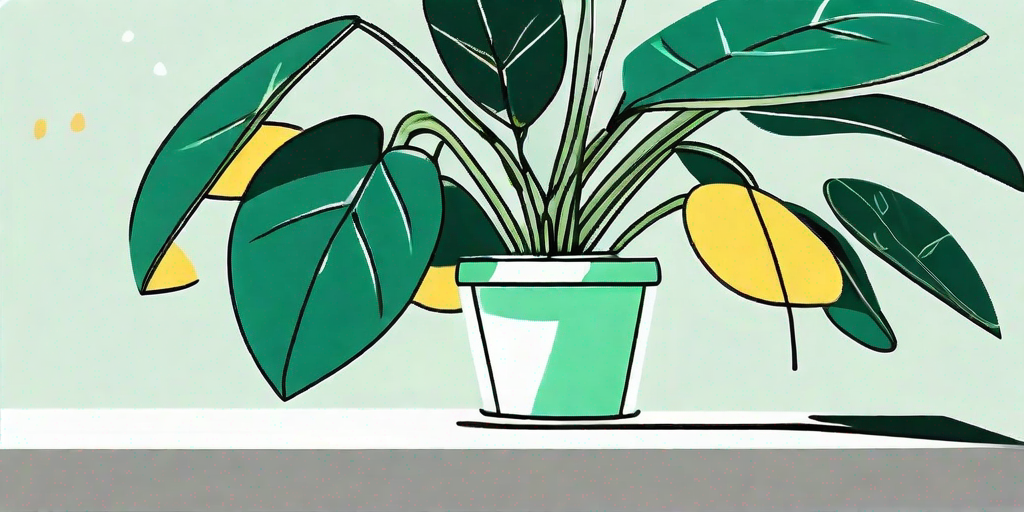
Ah, the rubber plant, a beloved household greenery known for its glossy, dark green leaves. But what happens when those vibrant leaves start turning yellow? It's like watching your favorite soap opera character take a sudden, unexpected turn for the worse. But don't worry! This isn't a melodrama, and your rubber plant isn't doomed. With a little TLC, you can nurse your rubber plant back to health and say goodbye to those pesky yellow leaves.
Understanding Your Rubber Plant
Before we dive into the nitty-gritty of rubber plant care, let's get to know our green friend a little better. The rubber plant, or Ficus elastica, is a tropical plant native to South and Southeast Asia. It's a bit of a drama queen, preferring bright, indirect light and a consistent watering schedule. But hey, who among us doesn't appreciate a little consistency?
Yellow leaves on your rubber plant can be a sign of a variety of issues, from overwatering to a lack of sunlight. It's like your plant's way of sending you an SOS signal. But fear not, plant parent! We're here to decode that signal and get your rubber plant back on track.
Identifying the Problem
Just like a detective, the first step to reviving your rubber plant is identifying the problem. Is your plant getting too much water? Not enough light? Or maybe it's just throwing a tantrum because you moved it from its favorite spot by the window. Let's investigate.
Overwatering
One common cause of yellow leaves is overwatering. Yes, your rubber plant likes to stay hydrated, but too much of a good thing can be harmful. If the leaves are yellow and wilted, it might be time to cut back on the H2O.
Underwatering
On the flip side, underwatering can also lead to yellow leaves. If your plant's leaves are yellow and crispy, it might be begging for a drink. Remember, balance is key!
Lack of Sunlight
Another common issue is a lack of sunlight. Your rubber plant is a bit of a sun worshipper, and without enough light, its leaves can turn yellow. If your plant isn't getting enough light, it might be time for a change of scenery.
Reviving Your Rubber Plant
Now that we've identified the problem, it's time to play plant doctor and nurse your rubber plant back to health. Here are some steps you can take to say goodbye to those yellow leaves.
Adjust Your Watering Schedule
If you're overwatering your plant, try cutting back on the water. Wait until the top inch of soil is dry before watering again. If you're underwatering, increase your watering schedule. Remember, your rubber plant likes consistency!
Change the Plant's Location
If your plant isn't getting enough light, try moving it to a brighter location. But be careful not to put it in direct sunlight, as this can scorch the leaves. Your rubber plant prefers bright, indirect light.
Check for Pests
Yellow leaves can also be a sign of pests. Check the underside of the leaves for any signs of bugs. If you find any, treat your plant with a natural insecticide.
Preventing Yellow Leaves
Prevention is always better than cure. Here are some tips to prevent yellow leaves on your rubber plant.
Maintain a Consistent Watering Schedule
As we've mentioned before, your rubber plant likes consistency. Try to maintain a consistent watering schedule to keep your plant happy and healthy.
Provide Adequate Light
Make sure your plant is getting enough light. If your plant is in a dark corner, consider moving it to a brighter location.
Regularly Check for Pests
Regularly check your plant for pests. Catching a pest problem early can save your plant a lot of stress.
FAQs
- Why are the leaves on my rubber plant turning yellow?
Yellow leaves can be a sign of overwatering, underwatering, lack of sunlight, or pests. - How often should I water my rubber plant?
Wait until the top inch of soil is dry before watering your rubber plant. - How much light does my rubber plant need?
Your rubber plant prefers bright, indirect light. Avoid placing it in direct sunlight.
And there you have it, folks! With a little detective work and some TLC, you can revive your rubber plant and say goodbye to yellow leaves. Remember, your rubber plant is a bit of a drama queen, but with the right care, it can be a stunning addition to your home. Happy gardening!















